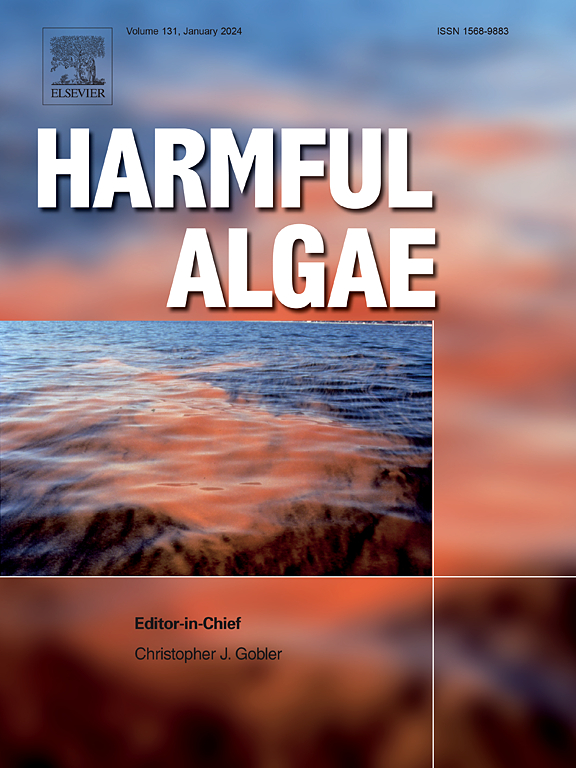The Great Atlantic Sargassum Belt: Impacts on the Central and Western Caribbean–A review
IF 4.5
1区 生物学
Q1 MARINE & FRESHWATER BIOLOGY
引用次数: 0
Abstract
Pelagic Sargassum spp. blooms pose a complex challenge to the Caribbean coast, affecting ecological, economic, and social dimensions. Since the formation of the Great Atlantic Sargassum Belt in 2011, these blooms have become an annual occurrence, lasting up to nine months each year. The Sargassum that washes ashore in the Western and Central Caribbean can reach tens of thousands of cubic meters per kilometer annually. These algae can carry pollutants, pathogens, and exotic species to coastal zones. As the algae decay, toxic gases and leachates are released, posing significant health risks to humans and other species. Ecologically, Sargassum landings contribute to beach erosion, nearshore waters eutrophication and transition from sandy to muddy sediments, and oxygen depletion, leading to losses in seagrass meadows flora and fauna. Mangrove ecosystems, inlets, and bays face disruptions in their biochemistry, hydrodynamics, and ecology, potentially shifting from carbon sinks to sources of greenhouse gases. Economically, the impact is severe, threatening the tourism and fishing industries crucial to the affected countries' economies. Socially, the blooms affect various aspects of well-being, including health, job quality, and connections to nature. Although progress has been made in understanding the impacts of Sargassum, much of the research has been concentrated in Mexico, primarily focusing on the ecological effects on coastal and beach environments. However, considerable knowledge gaps remain regarding the impacts of Sargassum on the ecosystems, economies, and social well-being of many other countries and territories in the region.
大大西洋马尾藻带:对加勒比中部和西部的影响-综述
远洋马尾藻的大量繁殖给加勒比海岸带来了复杂的挑战,影响了生态、经济和社会的各个方面。自2011年大西洋马尾藻带形成以来,这些水华每年都会发生,持续时间长达9个月。在加勒比海西部和中部被冲上岸的马尾藻每年可以达到每公里数万立方米。这些藻类可以携带污染物、病原体和外来物种到沿海地区。随着藻类的腐烂,有毒气体和渗滤液被释放出来,对人类和其他物种构成重大的健康风险。在生态学上,马尾藻的登陆导致了海滩侵蚀、近岸水域富营养化和从沙质沉积物到泥质沉积物的转变,以及氧气的消耗,导致海草草甸动植物的损失。红树林生态系统、入口和海湾面临着生物化学、流体动力学和生态学的破坏,可能从碳汇转变为温室气体的来源。在经济上,影响是严重的,威胁到对受影响国家经济至关重要的旅游业和渔业。在社会上,花开影响着幸福的各个方面,包括健康、工作质量和与自然的联系。尽管在了解马尾藻的影响方面取得了进展,但大部分研究都集中在墨西哥,主要集中在对海岸和海滩环境的生态影响上。然而,关于马尾藻对该地区许多其他国家和领土的生态系统、经济和社会福祉的影响,仍存在相当大的知识差距。
本文章由计算机程序翻译,如有差异,请以英文原文为准。
求助全文
约1分钟内获得全文
求助全文
来源期刊

Harmful Algae
生物-海洋与淡水生物学
CiteScore
12.50
自引率
15.20%
发文量
122
审稿时长
7.5 months
期刊介绍:
This journal provides a forum to promote knowledge of harmful microalgae and macroalgae, including cyanobacteria, as well as monitoring, management and control of these organisms.
 求助内容:
求助内容: 应助结果提醒方式:
应助结果提醒方式:


